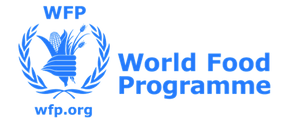Food plays a central role in determining how people live all over the world. Food brings communities together around shared traditions and recipes. These traditions have tremendous influence on family life and culture. However, providing families with enough good quality food to stay healthy is a huge challenge in many parts of the world.
2.6 billion people around the world are small farmers, or fully 40% of the world population.1 Throughout most of the world, people eat food that they grow themselves or that is grown very close to where they live. In these places, food traditions are tied to geography: people from the same area tend to eat the same kinds of foods. For example, in many West African nations the staple food is Fufu, a dough made from cassava, yams, or flour depending on what grows best in a particular region.
However, in places where people primarily get their food from ''industrial farms,'' food grown locally is a luxury and tends to be more expensive than food grown far from where it is eaten. For example, almost half of the fruits, vegetables, and nuts that are eaten in America are grown in one of America's fifty states (California).2 Many Americans do not know where their food is grown and often have food traditions that have little to do with what grows well in their area.
The Universal Declaration on Human Rights declares that access to healthy food is the right of every global citizen. However, many people in the world suffer from opposite problems: too much food or not enough of it. While nearly 30% of the world population suffers from some form of malnutrition about the same proportion (36%) of Americans are obese.3,4 So while food will continue to play a central role in how communities are defined, significant work is needed to understand how we can feed a growing population in a healthy and sustainable way.
1. Greenpeace
2. California Department of Food and Agriculture
3. Food and Agriculture Association of the United Nations
4. Centers for Disease Control and Prevention
|
Food and Agriculture Organization of the United Nations Hungry Planet Kenya: Farmer Refugees Watch the first segment of this video to learn about how junior field schools in Kenya are helping young people learn how to build successful farms. |

|
What is hunger? The World Food Program provides emergency food aid for 100 million people every year. See information about what hunger is, which countries are worst affected by hunger, and how to combat it. |

|
Food is an important part of communities' cultural identity. Listen to people from all over the world discuss what food means to their culture through these stories collected by the British Library. The British Library collects every publication produced in the UK and Ireland. |

|
Food choices vary widely from place to place. Sometimes foods that seem strange to eat in one place, are considered delicious in another place. The Public Broadcasting Service has compiled a list of foods that some cultures may consider unusual or funny to eat. See if any of your favorite foods are considered strange to eat another place. |